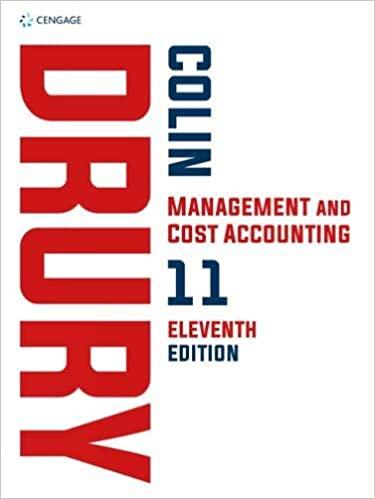Euclid plc has a factory that manufactures a wide range of specialist carpentry tools. One type of
Question:
Euclid plc has a factory that manufactures a wide range of specialist carpentry tools. One type of product, the Chipper, is made on a purpose-built machine that was installed in January 2017 at a cost of £210,000 with an expected useful life of seven years. This machine was assumed to have zero scrap value at the end of its life and was depreciated on the same straight line basis that the company used for all equipment.
Recently an improved machine has become available, at a price of £130,000, which requires two men to operate it rather than the five men required for the existing machine. It also uses a coarser grade of raw material costing £0.14 per Chipper, compared with £0.15 per Chipper for the present material.
Further, it would use only 60 per cent of the power consumed by the existing machine. However, it has an expected life of only three years and an expected scrap value of £10,000.
The factory manager is considering replacing the existing machine immediately with the new one as the suppliers have offered him £40,000 for the existing machine, which is substantially more than could be obtained on the second-hand market, provided the new machine is installed by 1 January 2021. Unfortunately, this would leave 80,000kg of the old raw material (sufficient to make 40,000 Chippers) which could not be used and which would fetch £2,000 on resale.
The Chipper department is treated as a profit centre. Current production amounts to 200,000 Chippers a year which are sold at a wholesale price of £1 each. The production of each Chipper consumes 0.5kW hour of electricity costing £0.10 per kW hour, and incurs direct labour costs amounting to £0.25 per brush. Overhead costs amount to £60,000 per annum and include £10,000 relating to supervision costs which vary according to the number of employees. The men no longer required to operate the new machine could be found employment elsewhere in the factory and would be paid their current wage although they
would be performing less skilled work normally paid at 80 per cent of their current rate.
Required:
(a) Ignoring the time value of money, evaluate the proposal to replace the existing machinery.
(b) Construct profit and loss accounts for each alternative for 2021, 2022 and 2023. Indicate how the factory manager’s decision might be influenced by these figures.
(c) Explain how your analysis would be affected if the new machine had a longer expected life and the time value of money was to be taken into account.
Step by Step Answer:






